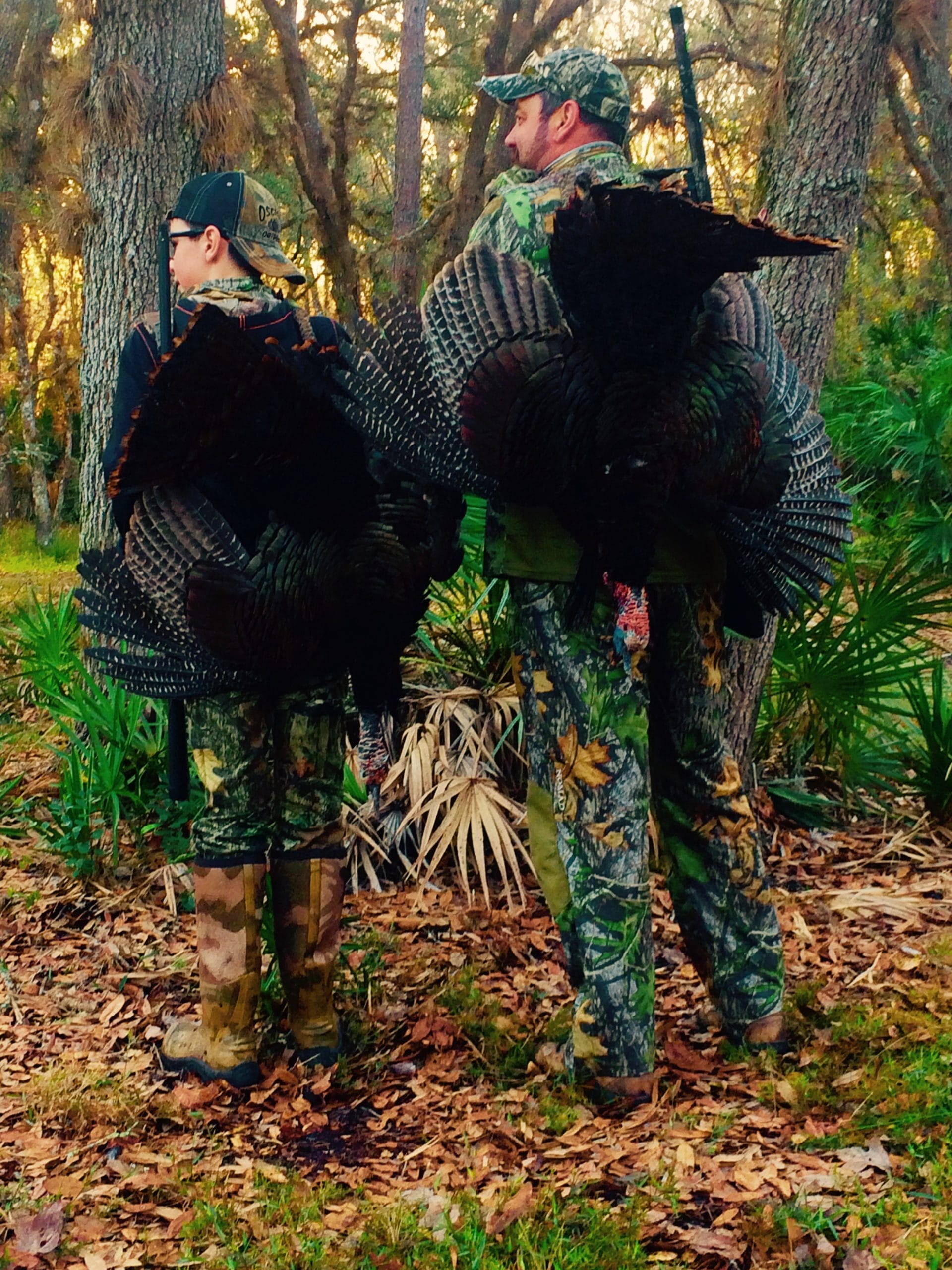By: Chris Ellis
I remember not that long ago, it seemed like the sport of turkey hunting used to be easy – grab a few shells from the gun cabinet and an old, reliable pump shotgun and hit the woods. The hardest part was walking back to the truck with the turkey and plucking the feathers neatly enough so that none of them made it to the dinner plate.
As with most things in life, we humans tend to complicate matters – especially matters we care deeply about. In the true spirit of complication, as a pre-season ritual, a band of avid turkey hunters set a date on their calendars to meet at the gun range for our annual turkey-gun-patterning session.

My crew showed up at a predetermined locale with one goal in mind – to pattern our shotguns for the spring gobbler season. You see, turkey season is considered by most to be a short season, and in that short amount of time die-hards want everything predictable to be well, predictable. So, with a mixture of no less than 12 variety of shells with various forms of shot, shotguns of all makes and models, a plethora of choke tubes and targets, we were bound and determined to see which turkey load/choke combination would serve our needs the best in the weeks ahead. (With all of us bringing a mixture of shells and chokes, we saved time and money by each of us not having to buy everything individually. We all share the initial cost of setting up our shotguns.)

To save the shoulders (and wallets) from soreness, we started with target loads at the 25-yard line. Once our shotguns were sighted in some with beaded sights and some with optics, we switched to mega-magnum loads and began the process of increasing yardage to see just how far we could shoot and still have an effective pattern on the turkey target. Some shotguns patterned easily and required no choke change or load modifications while others were finicky and took many different combination trials to gain headway. The ranges varied from 15 to 40 yards until we were satisfied that our field guns were ready for the chance to wreck Old Tom’s day.
With the speak of shotshell pellet ballistics (internal, external and of course terminal performance), our motley crew of worn out turkey hunters sounded like an article I once read about the how a shotgun actually works, and I am sure if recorded, we could have sold the session to one of the outdoor television networks and appeared really smart … Until, someone brought up the a “favorite” complicated topic for turkey hunters: How far of a shot is too far?
The conversation quickly turned to field experience, and old tales of miraculous hits and misses began surfacing. Someone knew someone who knew a guy who shot a dreaded field turkey at 60 paces and dropped it like a stone. Others laughed and said it is best not to “stretch” the barrels and wait until the turkey is at a much more suitable distance before firing.
Perhaps the best advice came in the form of two memorable quotes from this particular range session: “Wait until you can clearly see the definition of the folds in the gobbler’s wattle,” said a tenured turkey hunter.
The second bit of advice that proved to be truer than any: “Boy, all these shotguns pattern well at 25 yards.”
The biggest dilemma in setting up your shotgun for turkey hunting is getting a pattern you like and are confident in both close and long-range situations. Setting a shotgun up for ultra-long shots that throw a softball-sized pattern at 45 yards can mean that if a turkey sticks his head up at seven steps away, that shotgun is now going to be so super tightly patterned that making that shot can be tricky. I’ve seen many turkeys missed at close range with super-magnum set-ups that your granddaddy’s old .410 shotgun would have clobbered the bird. On the flipside, if you pattern your shotgun with a load/choke combination to have the perfect pattern at 15 yards, and Old Tom steps out at 43 yards, that shot can be tricky, too. Finding a happy medium in both range and pattern densities is the key to having assurance in the field. When the old gobbler finally presents himself to you, having that load and pattern data and knowing your ideal effective yardages will give you confidence to take the shot.
When setting up your shotgun for turkey hunting, don’t complicate things. More importantly, spend some time at the range practicing hunt scenarios.







